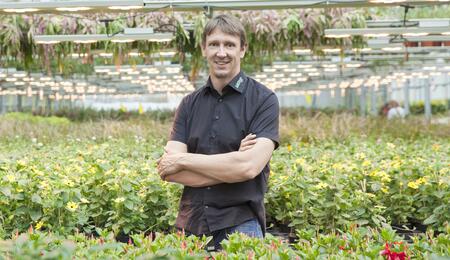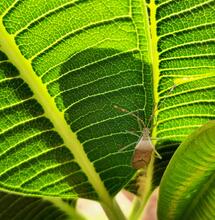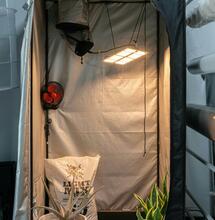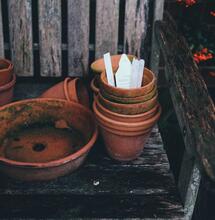A Technical Breakdown About Lighting

Recently the break through in new horticultural lighting systems is at an all time high. With the choice between fluorescent, MH (metal halide), HPS (high pressure sodium), plasma and LED, Soft Secrets sat down with Martin Anker from SANlight in Austria, to get to breakdown the things we all want to know when it comes to lighting. From efficacy, photo active radiation, PPFD and the relationship Cannabis plants have with light.
An Interview With SANlight
SSUK: Hello Martin, can you tell us your background and how you got started in Cannabis?
I studied Mechatronics, and have been a passionate grower since 20 years. During my Master thesis I started experimenting with LED grow lights, and founded SANlight. So I combined my deep technical background with my passion. Today SANlight is one of the most successful LED light manufacturers. We are running different laboratories to analyse the effect from different light spectrums on plants, doing in house development and production, etc.
What is the difference in spectrums between metal halide, high pressure sodium and LED?
Due to technology metal halide and hight pressure sodium lamps has a pretty spiky spectrum. While metal halide lamps emit lots of light in region between 380nm and 580nm (blue/green colours) the HPS lights are more focused on light between 580nm and 680nm (orange/red colours). With LED technology we can build broadband light spectrums which include everything between 380nm and 730nm. For sure not every possible spectrum has the efficacy needed to build up an energy saving led fixture.
How are the SANlight made and what technology is being incorporated?
We are continuously doing research on light spectrums and always have a look on the newest LED technology. SANlight Q-Series Gen2 is working with newest Osram 2mm2 chip technology. In comparison to other LEDs like midpower or COB the lifetime is much higher. This means a grower can use the light many years longer. Our highly efficient LED chips are covered by an own developed secondary optics, which targets the light to the canopy and protect the LEDs against dirt etc.
Are there any colours in the lighting spectrum Cannabis plants don’t really require?
That’s a tricky question. We are doing now research for 8 years for that. Today's answer is that cannabis can use every photon between 380nm and 730nm. Photons in the PAR region do contribute to photosensitises, while UV and Far Red light helps to control drug content and morphogenesis. But on one hand not every light colour can be produced in the same efficacy on the second hand plants do not handle ever photon with the same quantum efficiency. Creating a light spectrum for cannabis means to find the middle between maximum efficacy from an electrical point of view (PPF/J), maximum efficacy from the biological point of few. Additionally, the morphogenesis should be right.
How intense should lighting be during seedling and the vegetative period of 18/6?
Intensities relate to the light spectrum. That means there is no totally clear answer. In general, we recommend 100 – 200µmol/m2/s rooting of clones. Seedling and vegetative period can be done with 200 – 400µmol/m2/s.
Which type of light do clones require to produce healthy roots?
A high portion of blue light combined with a nice far-red/red ratio will produce healthy roots. It’s important that a “rooting” spectrum do not drive photosynthesis to the maximum, as this will cause deficiencies at the unrooted clone.
When do you know if the plants are receiving too little or too much light?
To little light can be detected by having a look at the elongation in vegetative phase. Bleaching is an indicator for too much light. That means plants are reducing chlorophyll and leaves are getting white therefor.
What is PAR and why is it important when growing Cannabis?
PAR is the short cut for Photosynthetic Active Radiation. It’s all light between 400nm and 700nm (blue – red). As higher the amount of PAR light as more photosynthesis. But photosynthesis is not a linear function. Following doubling the PAR does not generally mean doubling photosynthesis.
Can you explain the difference between Lumens and PAR?
While PAR is a function which is not weighing different colours, Lumens weight green light more than e.g. red light. Lumens represent the sensitivity from the human eye, which see green light best. You can use PAR or PPF to qualify your lighting set up.
Is there a formula to calculate PAR produced by a HPS?
Normally for an HPS bulb you will find PPF output in the data sheet. But this does not include the losses from reflector and ballast. A good single ended 600W HPS bulb generates roughly 1.100µmol/s. The whole system output depending on the efficacy of ballast and reflector is somewhere between 820 and 850µmol/s. Following losses from reflector and ballast are between 23 to 25%.
What are the key points a grower should be paying attention to when looking at investing in a horticultural grow light?
Every light has advantages and disadvantages. So, the question is, does my light fit to my personal requirements? For example, a very professional HPS system which has ballast and reflector in one fixture is mostly made for greenhouses. That means it’s working in a greenhouse very well, but in a grow tent this lamp will have insufficient light distribution because it’s optimised for high distance usage. In general, a grower should look at the given PPF values on the data sheet, and the light distribution. As good LED fixtures are a bigger invest, someone should check the lifetime too. Lifetime means how long can the fixture be running till 90% of the light output is reached. There are very big differences. Many actual LEDs on the market has losses up to 7% after 6.000h of usage. Also, important to check if its possible to clean the light. LED fixtures without protection covering or lenses are difficult to clean from pollen, resin etc. That means the degradation because of dirt is higher as the degradation from the led itself.
Can you explain what causes Cannabis plants to stretch, and is there a way to control it?
In general far red light or better the relationship between far red and red light influences stretching of the plant. But also, other colours/wavelength has influences on stretching behaviour. Also, the light intensity influence the stretch very strong. Growers can control stretching by changing light intensities at canopy level. If plant stays too short → reduce light intensity. If plant is growing too stretched → increase light intensity.
What are your top tips for growing in the vegetative stage and flower?
Using LED lights has big influences on humidity in your grow room. Following its important to check the VPD levels regularly. As you have 6h more time to power up the plant with photons in veg phase the needed intensity can/should be lower. We recommend 300 – 400µmol/m2/s at canopy level. As a grower is reducing the day length for flowering, he need then higher intensities like 600µmol/m2/s+ Thanks for this fascinating interview, Martin!



.png)